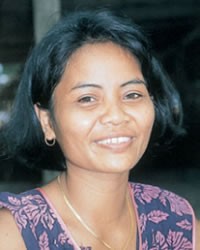Mandar in Indonesia

Photo Source:
Copyrighted © 2026
Anonymous All rights reserved. Used with permission |
Send Joshua Project a map of this people group.
|
| People Name: | Mandar |
| Country: | Indonesia |
| 10/40 Window: | Yes |
| Population: | 565,000 |
| World Population: | 565,000 |
| Primary Language: | Mandar |
| Primary Religion: | Islam |
| Christian Adherents: | 0.07 % |
| Evangelicals: | 0.00 % |
| Scripture: | Portions |
| Ministry Resources: | No |
| Jesus Film: | Yes |
| Audio Recordings: | Yes |
| People Cluster: | Bugi-Makassar of Sulawesi |
| Affinity Bloc: | Malay Peoples |
| Progress Level: |
|
Introduction / History
The Mandar live on low coastal plains and mountains in the province of West Sulawesi. The Mandar region consists of mountains with a large area in the middle suitable for rice fields.
What Are Their Lives Like?
As a society that used to be an independent kingdom, the Mandar recognize three social classes: nobility, a middle class of commoners and a slave class. The nobility are referred to as Daeng for "royal class" and Puang for the "common class." There is a king of the Mandar, chosen by traditional leaders.
What Are Their Beliefs?
The Mandar are animistic Muslims believing in the power of unseen spirits that inhabit sacred places. They often seek the services of a dukun (shaman/healer/occultist).
What Are Their Needs?
The Mandar need assistance in managing their commercial agricultural enterprises so that they can obtain maximum profit. They need help to professionally market sea products (sea turtle and cakalang fish) to obtain the highest market values. Perhaps church planters from other Indonesian people groups will come to the Mandar. Some Scripture has been published in the Mandar language.
Prayer Points
Pray for translation of the entire New Testament for the Mandars.
Pray the Mandar would not be overlooked.
Pray the few followers of Christ among the Mandar would learn to put on the full armor of God, being protected against all that will harm their faith and their testimony.
Pray for dreams of the risen, victorious Christ to come to Mandar family and religious leaders.